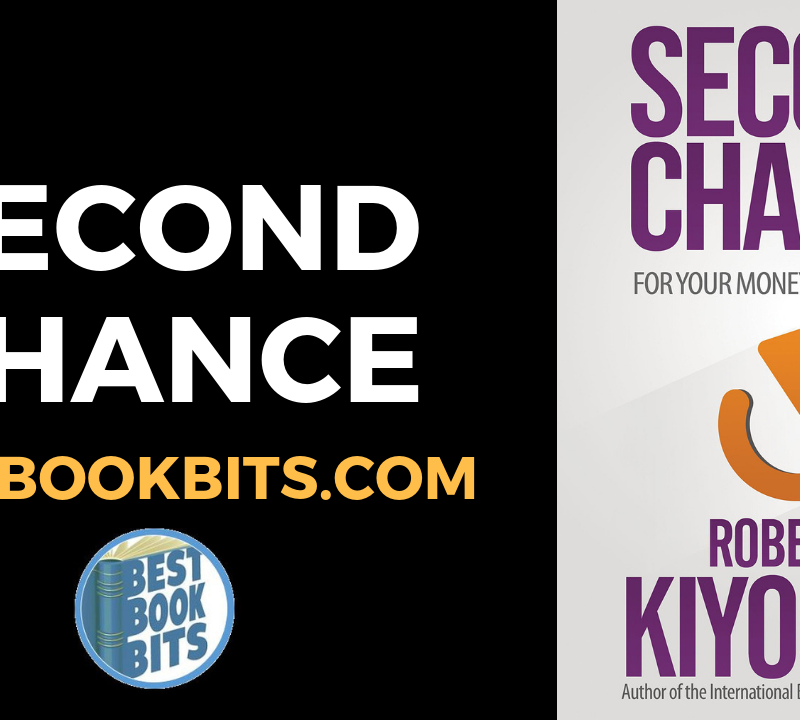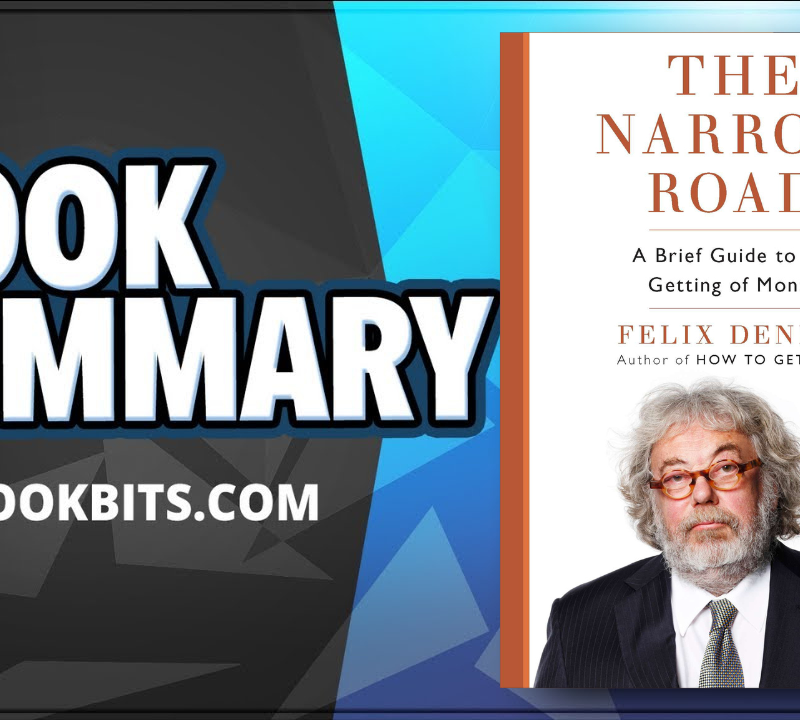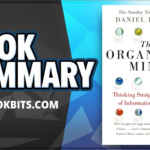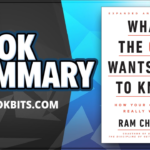FOLLOW US HERE > |YouTube | Podbean | Website
Why the Rich Are Getting Richer by Robert Kiyosaki
It’s Robert Kiyosaki’s position that, ‘It is our educational system that causes the gap between the rich and everyone else.’ He laid the foundation for many of his messages in the international best-seller Rich Dad Poor Dad – the #1 personal finance book of all time – and in Why the Rich Are Getting Richer, he makes his case…
In this book, the reader will learn why the gap between the rich and everyone else grows wider; why savers are losers; why debt and taxes make the rich richer; why traditional education actually causes many highly educated people – such as Robert’s poor dad – to live poorly.
In this book, the reader will find out why going to school, working hard, saving money, buying a house, getting out of debt, and investing for the long term in the stock market is the worst financial advice for most people. In this book, the reader will find out why real financial education may never be taught in schools.
In this book, Robert shares the answers found on his life-long search, after repeatedly asking the question, ‘When will we learn about money?’ In this book, the reader will find out ‘What financial education is… really.’
About the author Robert Kiyosaki
Robert Kiyosaki is a businessman, investor and writer of several works, among them:
His profession in the Merchant Marine earned him a job at one of the largest oil companies in the United States, Standard Oil Company.
On the other hand, as a member of the Marine Corps group in his region, he studied ways of leading troops in the Vietnam War until 1974. After that period, he learned sales techniques at the company he worked for, Xerox.
From this learning he set up Cashflow Technologies, achieving success worldwide through books that he and his consultants develop.
To whom is this book indicated?
“Why the Rich Are Getting Richer” is recommended for anyone who is willing to transform their financial conditions and become a professional investor.
Main ideas of the book “Why the Rich Are Getting Richer”
While the poor are getting poorer with taxes, the rich use them to get richer;
The CASHFLOW quadrant determines the four quadrants in which a person can belong financially: employee, self-employed, large business owner and investor;
The rich use debt, market crises and taxes to get richer;
To get rich, it is not enough just to make money; you have to change your attitude;
Many people believe that saving money and investing in the long run is a good option for getting rich; however, author Robert Kiyosaki proves the opposite;
You don’t have to give up fun and happiness to get rich.
Overview: Why the rich get richer every time
In the first part, the book reports how taxes negatively impact the poor and the middle class, while they make the rich increasingly wealthy.
On the one hand, the most affected classes see taxes as a burden that needs to be paid; on the other hand, the rich see possibilities of gain.
From this perspective, the rich get richer, because, unlike the rest, they are not restricted to working to pay taxes.
Then the author Robert Kiyosaki presents the fact of why saving is not a good option. He reports that the savings interest rate is close to zero. What’s more, banks charge you to save your money almost the same as you pay to save it.
Another important factor cited in the book, “Why the Rich Are Getting Richer”, is the fact that states are printing more and more money to prevent their economies from collapsing. This causes the currency to devalue, leading to crises.
This stems from the impact projected for the year 1971. During this period, Richard Nixon uncoupled the gold standard dollar to start printing money, and its value decreased by 90%.
Overview: How the rich get rich
Do you know why taxes make the rich richer? Through tax incentives! The government provides lower taxes to large companies.
In this sense, before taking the next step, it is necessary to understand the CASHFLOW quadrant, taken by the author Robert Kiyosaki from his other work, “Financial Independence”.
CASHFLOW reveals who pays the most taxes. The quadrants are:
E from Employee;
S from Self-Employed;
O from Owner of large companies;
I from Investor.
The Owner of large companies (O) and Investor (I) quadrants get more tax incentives because the initiatives that take place there help the government play its role in improving the economy.
If you want to be part of such quadrants, the best option is to prepare your mindset, skills for money, and educate yourself financially.
When you see debt and taxes as a hindrance to getting rich, you are targeting the Self-Employed (S) and Employee (E) quadrants. Because they are committed to paying constantly, these quadrants are the most taxed.
The more difficult it is to make mistakes and admit your mistakes, the more difficult it will be to leave Employee and Self-Employed and pass to Owner and Investor. According to the book “Why the Rich Are Getting Richer”, changing the quadrant requires the following types of intelligences:
Spiritual intelligence: believe in yourself;
Mental intelligence: seek knowledge;
Emotional intelligence: learn from mistakes;
Physical intelligence: use what you know and resist falling.
The rich buy bargains that enrich them. They wait for stock market crises to buy the best at low prices such as real estate, gold, silver and trades at minimal prices. That way, the rich don’t invest in the long run, they diversify into a little of everything.
Overview: What is not financial education
Financial inefficiency is something that immobilizes people, destroys self-esteem, making them frustrated and depressed. Thus, they end up committing corrupt acts in search of more money.
On the other hand, inefficiency can also blind you as your confidence goes beyond the necessary level, to the point of not letting you see the market’s crises.
Therefore, it is necessary to be careful with the level of confidence, since, as it becomes smaller than necessary, we feel victims of our own finances. However, when trust becomes ego, we ignore trends.
But what makes people financially inefficient? Sometimes, it may be the lack of adequate information about what financial education consists of.
The author Robert Kiyosaki discusses in his work, “Why the Rich Are Getting Richer”, which people may think it is, but it is not financial education, among them:
Economics: “If economics studies make you rich, why are most economists poor?”;
Balancing a checkbook does not make you a financially educated person;
Saving money: “Why would an intelligent person save money when the government is printing it?”;
Your credit rating, or score, is important, but it is not financial education. Many poor and middle class people have good credit scores;
Get rid of debt: bad debt buys liabilities. Good debts are those that someone else pays for;
Living below their means has made the poor and the middle class poorer;
Long-term investing: “Why invest in the long run if the next crisis will be thousands of times larger than the great 1929 crisis?”.
Overview: What is legitimately financial education
Legitimate financial education does not have to be complex or confusing. This concept can be very simple, such as playing Real Estate Bank. In addition, it should include the concept of differences between the following three types of income:
Income earned: “the most taxed of the three”. This income is based on working to generate income. Examples: savings, pension plans etc;
Portfolio income: “it is understood as “capital gains”. The purpose is to generate profit; For example, you buy a stock when it is cheap and sell it when it is valued;
Passive income: “is the cash flow of an asset”. An example is buying a property and putting it to rent. The monthly rent is your passive income.
Most of the poor and the middle class have only earned income, as they work for the money. Millionaires, on the other hand, usually invest in portfolio income.
Now, the truly wealthy, or called “sophisticated investors” or “money masters”, have another type of income: phantom income.
For this type of income, debts are cash flow. Phantom income from debt consists of “renting money” to do more, instead of working for it.
As quoted by author Robert Kiyosaki in his book “Why the Rich Are Getting Richer”, some examples of phantom income are:
Appreciation: is the appreciation of the price of a property;
Amortization: debt reduction;
Depreciation: this is the biggest source of phantom income for homeowners, as wear and tear reduces property taxes even though it has been valued.
Do you have a plan B?
In order to have a plan B, legitimate financial education is required, which includes study and practice.
The goal of this plan is to increase your mental, physical, emotional and spiritual intelligence, so that you can change quadrants.
Because of this, learning to use debts and taxes is important to move towards a better quadrant.
Thus, you must create an interest in yourself to frequently analyze how your financial obligations are interfering in your life.
You do not need to live life on the average, having a rented house, an economy car, saving money etc.
Legitimate financial education gives you a great advantage in life: having fun, living beyond your means and still getting rich!
Best option is to associate that behavior with some type of pain.
Okay, but how can I apply this to my life?
Learn from finance books how to have a more prosperous life;
Invest right: look for courses that can help you;
Don’t be afraid to make a mistake, as this will make you reach a better quadrant;
Always have a plan B in mind;
Always study about financial education;
Identify the best strategies for knowing where to inject capital.













